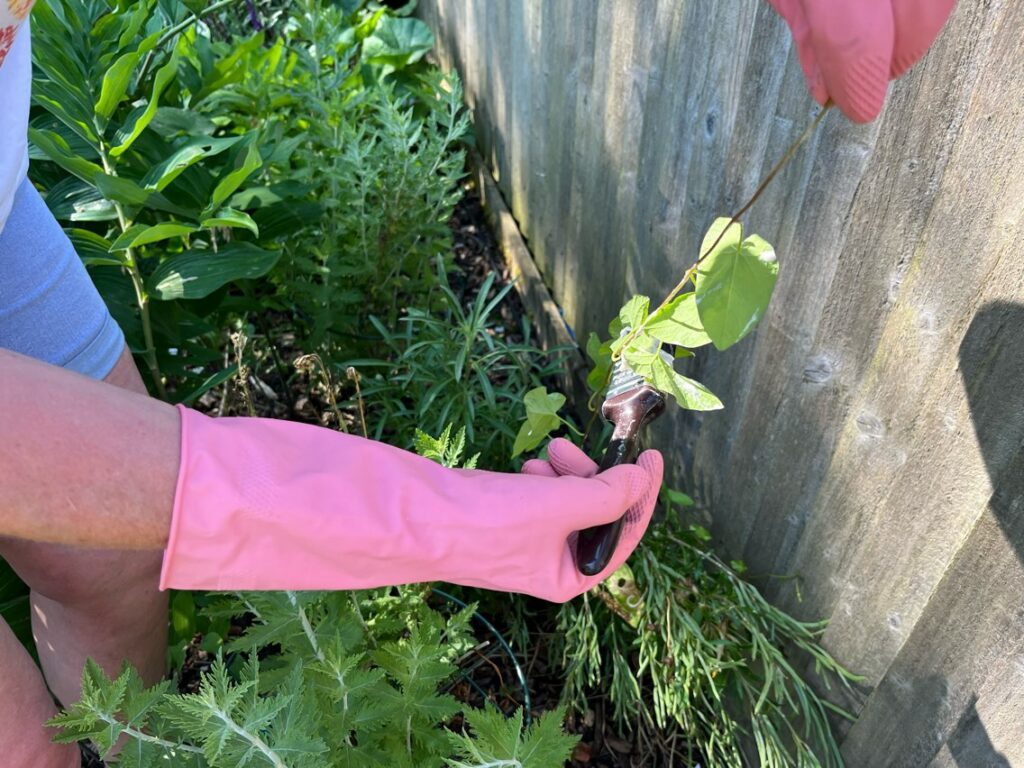Controlling bindweed and brambles with Roundup weed killer in existing shrubs and plants

Targeted Treatment: A Refined Approach to Combating Bindweed
Bindweed, known for its invasive nature, poses a significant challenge in maintaining well-kept gardens and landscapes. Tackling this resilient weed often demands strategic and precise methods that spare existing shrubs and plants from the burdensome task of hand removal. In this article, we’ll delve into a targeted treatment that sidesteps the need for manually detangling bindweed and brambles, offering an effective solution for gardeners.
Understanding the Bindweed Conundrum
Bindweed, scientifically labeled Convolvulus arvensis, is a perennial vine belonging to the morning glory family. Its rapid growth and tendency to entwine around other plants make it an arduous weed to control. This invasive plant can swiftly dominate garden beds, strangling desired flora and compromising overall aesthetics.
While traditional herbicides like Roundup have proven effective against bindweed, their broad-spectrum nature raises concerns about inadvertently harming desirable plants. To address this, a targeted approach using a customized thickened solution becomes a viable option.

The Refined Treatment
To create a targeted solution for bindweed control, gather the following:
- Roundup or a glyphosate-based herbicide: A common choice for weed control, Roundup contains glyphosate as its active ingredient, readily available in gardening stores.
- Thickening agent: Utilize household items like flour or wallpaper paste, serving as agents to thicken the herbicide solution.
Application Process:
- Prepare the Area: Before application, carefully disentangle bindweed stems from neighboring plants, ensuring the solution exclusively reaches the bindweed.
- Mix the Solution: In a clean container, prepare the herbicide as per the manufacturer’s instructions. Gradually add flour or wallpaper paste while stirring continuously. Aim for a consistency similar to pancake batter or a thick cream.
- Application: Use a brush or sponge to apply the thickened solution directly onto bindweed foliage, ensuring comprehensive coverage while avoiding contact with desirable plants. The thickened mixture enhances herbicide adhesion to the bindweed, optimizing its effectiveness.
- Monitoring and Repeat Treatments: Over the subsequent weeks, observe the treated bindweed for signs of wilting and yellowing as the herbicide takes effect. If regrowth occurs, reapply the solution until complete eradication is achieved.
Safety Measures
While the refined solution minimizes the risk of drift and harm to desirable plants, safety remains paramount. Wear protective gloves, long sleeves, and eye protection when handling herbicides, its a recommended precaution to have an emergency eyewash station nearby to quickly rinse any accidental chemical exposure, minimizing risks during application.. Avoid applying the solution on windy days to prevent unintended spread.
Controlling bindweed demands a proactive stance. This targeted treatment, combining Roundup weed killer with a thickening agent, offers an effective method by directly applying the herbicide to bindweed foliage, minimizing potential harm to surrounding plants. Remember to exercise caution and follow safety guidelines, ensuring a monitored and comprehensive approach to eradicate bindweed.